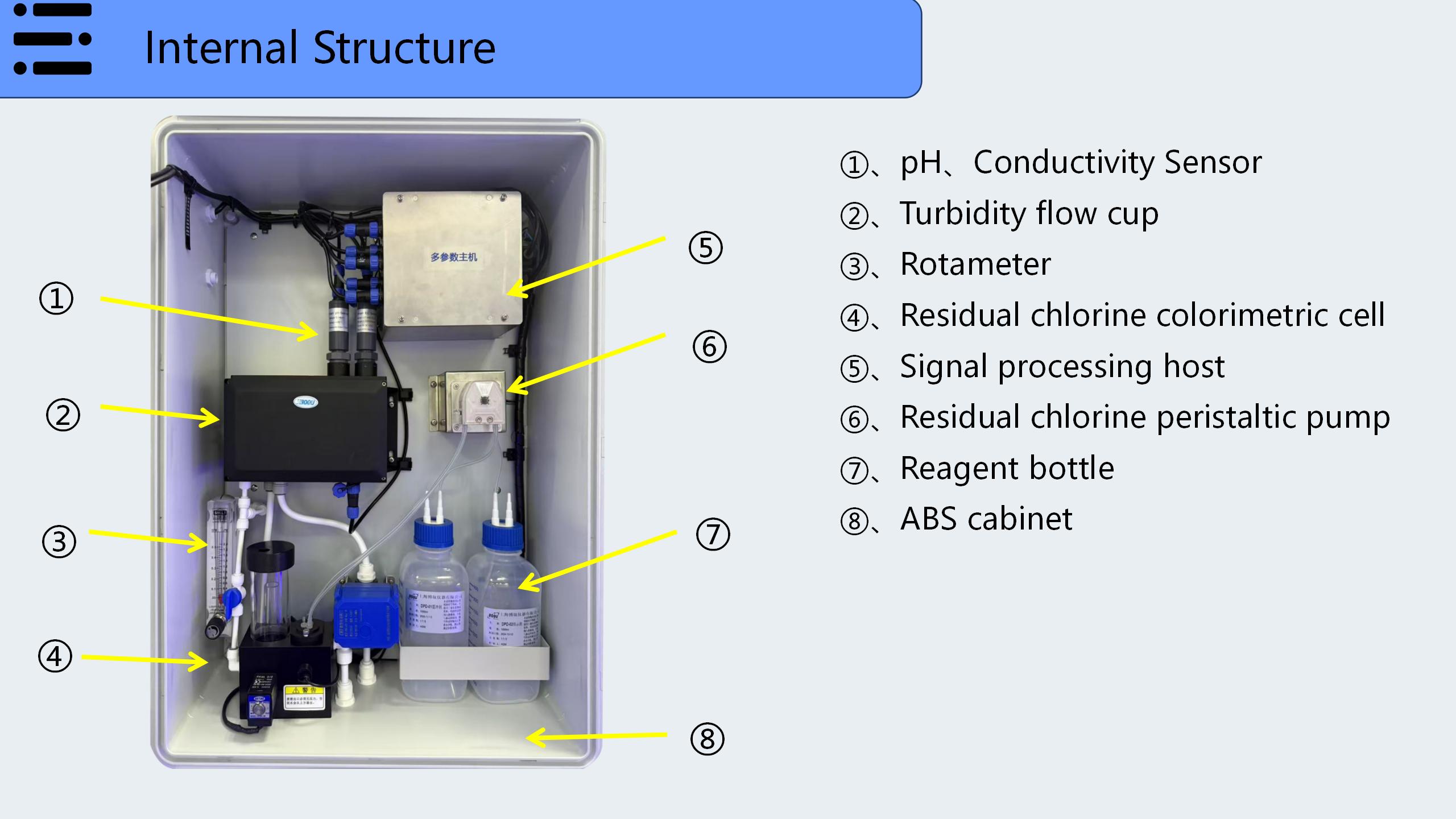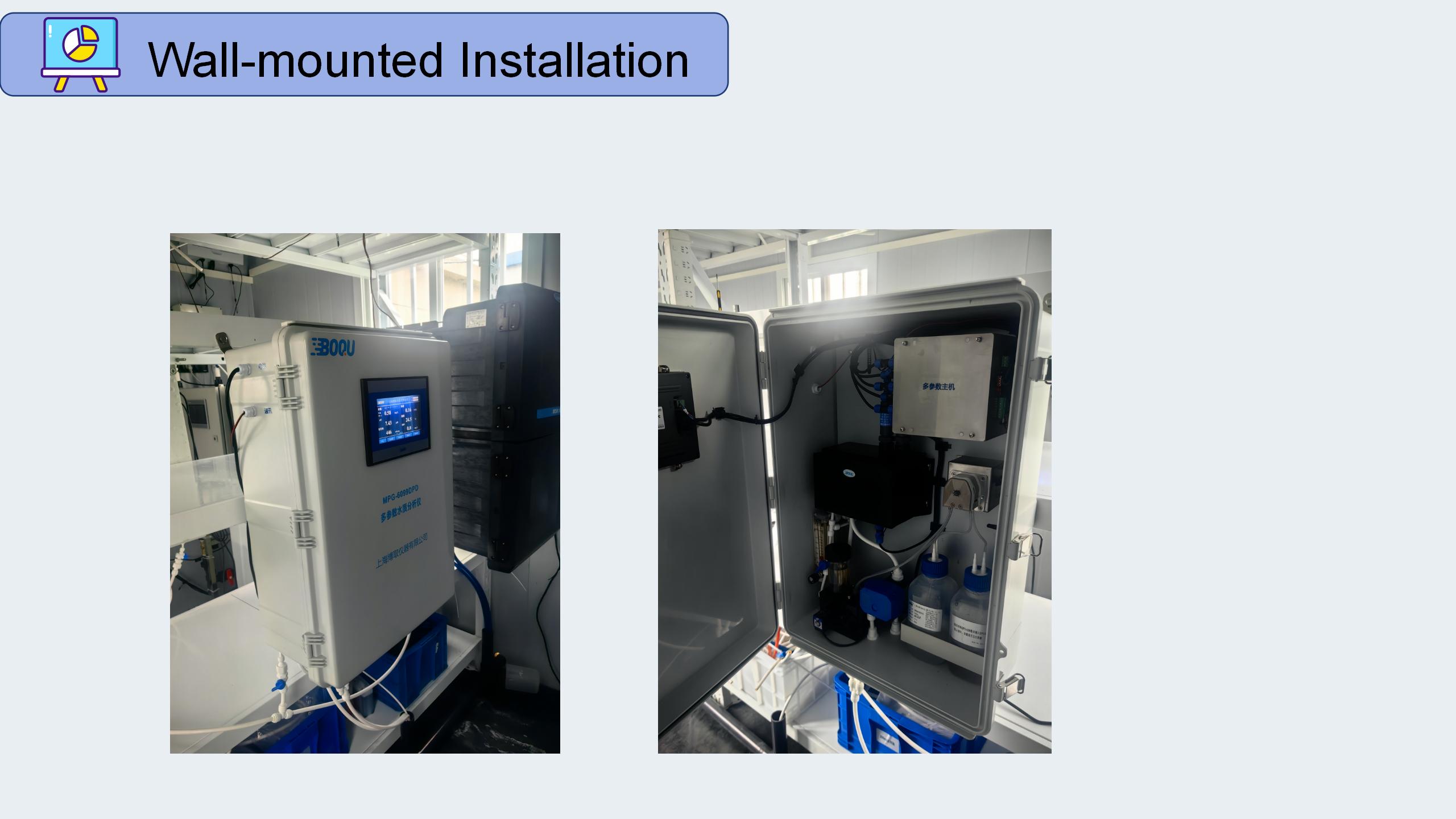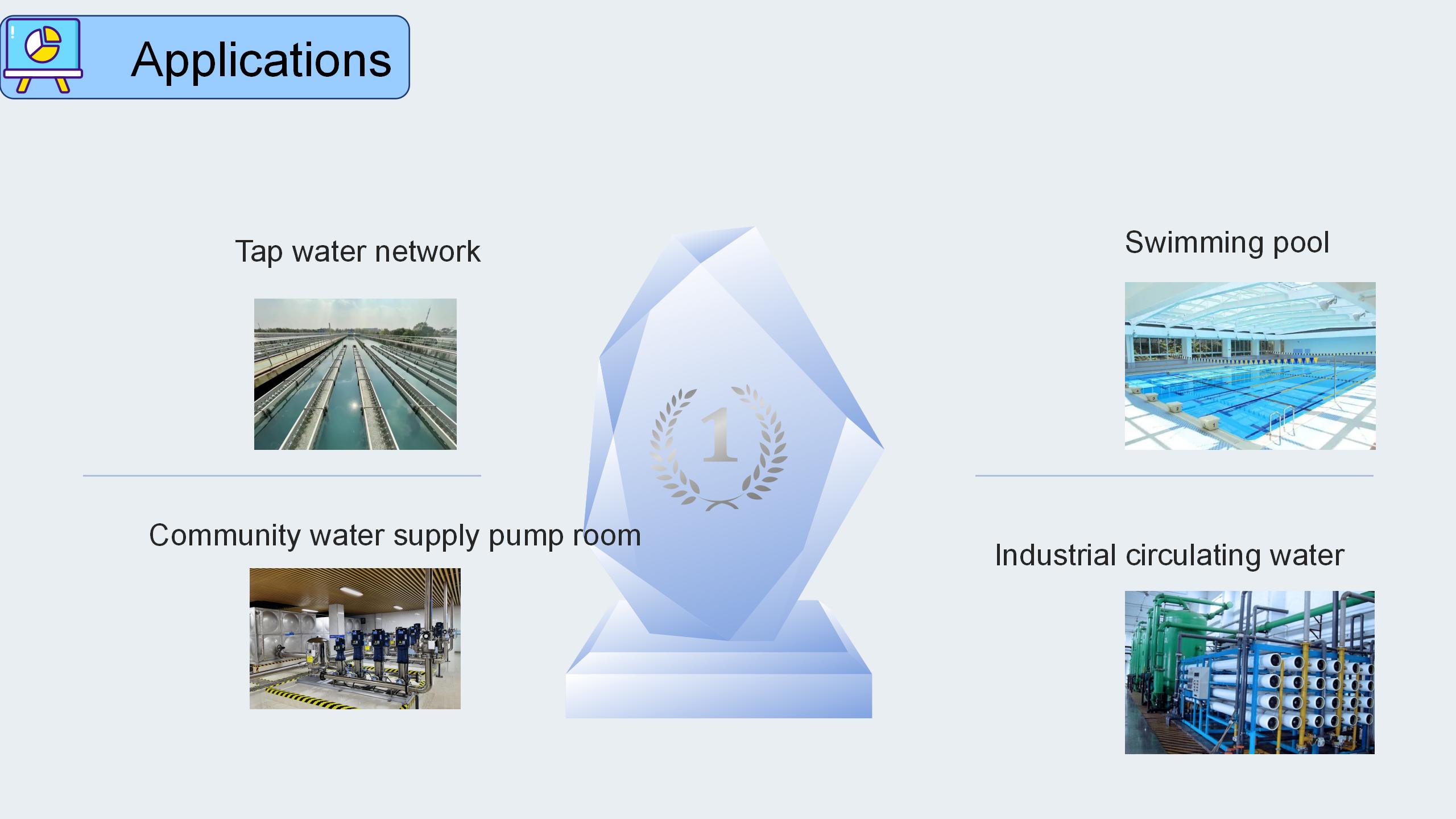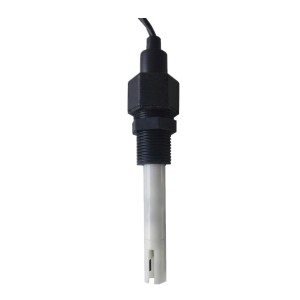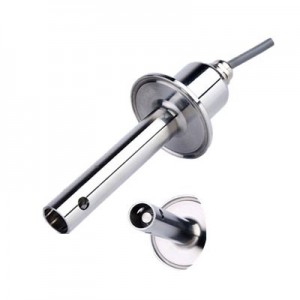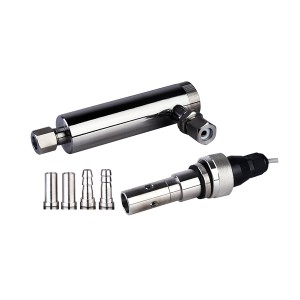| Model | MPG-6099DPD |
| Measuring Principle | Residual chlorine:DPD |
| Turbidity: Infrared light scattering absorption method | |
| Residual chlorine | |
| Measuring range | Residual chlorine:0-10mg/L;; |
| Turbidity:0-2NTU | |
| pH:0-14pH | |
| ORP:-2000mV~+2000 mV;(alternative) | |
| Conductivity:0-2000uS/cm; | |
| Temperature:0-60℃ | |
| Accuracy | Residual chlorine:0-5mg/L:±5% or ±0.03mg/L;6~10mg/L:±10% |
| Turbidity: ±2% or ±0.015NTU(Take the larger value) | |
| pH:±0. 1pH; | |
| ORP:±20mV | |
| Conductivity:±1%FS | |
| Temperature: ±0.5℃ | |
| Display Screen | 10-inch color LCD touch screen display |
| Dimension | 500mm×716mm×250mm |
| Data Storage | The data can be stored for 3 years and supports export via USB flash drive |
| Communication Protocol | RS485 Modbus RTU |
| Interval of Measurement | Residual chlorine:The measurement interval can be set |
| pH/ORP/ conductivity/temperature/turbidity:Continuous measurement | |
| Dosage of Reagent | Residual chlorine: 5000 sets of data |
| Operating Conditions | Sample flow rate: 250-1200mL/min, inlet pressure: 1bar (≤1.2bar), sample temperature: 5℃ - 40℃ |
| Protection level/material | IP55,ABS |
| Inlet and outlet pipes | nlet pipe Φ6, outlet pipe Φ10;Overflow pipe Φ10 |
Product Advantages
1.High-precision residual chlorine detection (DPD method)
The DPD method is an international standard method, which directly quantifies the residual chlorine concentration through colorimetry. It has a low response to the cross-reaction of ozone and chlorine dioxide as well as pH changes, resulting in strong anti-interference ability.
2.Wide Range of Application
The residual chlorine detection range is wide (0-10 mg/L), suitable for different aplications (drinking water, swimming pools, industrial circulating water, front end of reverse osmosis).
3.Easy to install and maintain
Integrated design, easy to install. All internal units operate independently. Maintenance can directly maintain the corresponding modules without the need for overall disassembly.









